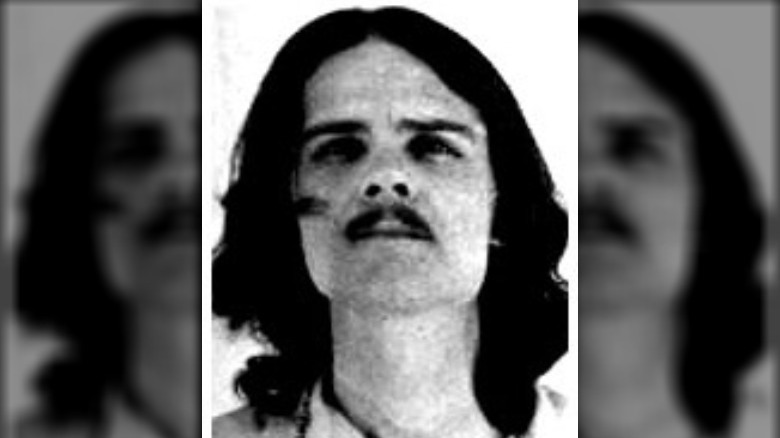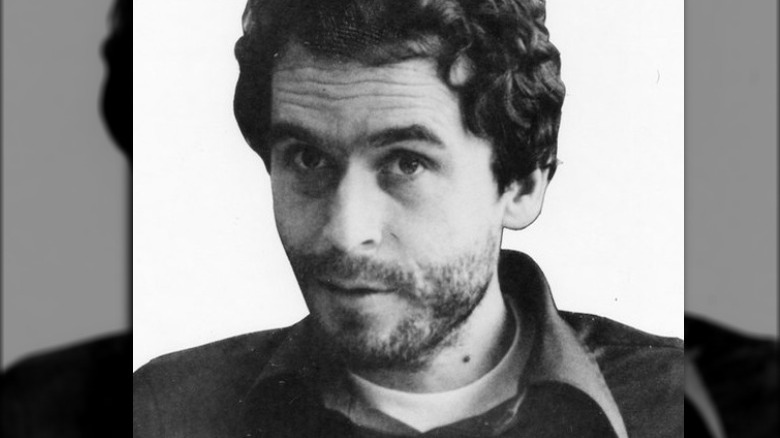These Are The 4 Types Of Serial Killers
Society and pop culture's infatuation with true crime seems to be more prevalent than ever these days. It isn't unusual for someone to spend a good part of their day listening to one of the many podcasts on the subject or checking out a Netflix movie or documentary unpacking Ted Bundy's harrowing spree of bloodshed. According to Statista, the second highest-rated podcast in 2019 was that of comedians Karen Kilgariff and Georgia Hardstark who host the true-crime podcast, "My Favorite Murder."
Whatever the reason may be, people are more curious than ever about what makes a killer a killer. How does the psychological phenomenon arise? Why the impulse? Where does it all start? Is there any way to stop it once it begins? One of the best ways to approach the matter is classification. According to experts, there are four different types of serial killers: Visionary, Hedonistic, Mission-oriented, and Power/Control (via This Interests Me).
The Visionary
The Visionary murderer kills on behalf of what they believe to be a commanding otherworldly entity. In other words, they're "on a mission from God." Killers within this demographic are typically disorganized in their actions and often suffer from psychosis, hearing voices that aren't real, and/or experiencing vivid hallucinations that lead to a psychotic break and a departure from reality (per Psychology Today).
One such killer was Herbert Mullin. In the 1970s, he took the lives of 13 people in order to prevent what he believed to be an impending and inevitable earthquake in California. Mullin claimed that his "human sacrifices" would appease the otherworldly entity that was speaking to him and prompting him to kill. After being sent to jail for his crimes, experts diagnosed him as a paranoid schizophrenic whose symptoms were more than likely accelerated by heavy use of hallucinogenic drugs in his earlier years (via Psychology Today).
The Hedonistic killer
Hedonistic killers, This Interests Me reports, murder for the sake of personal pleasure with the subcategories that drive them being "lust, thrill, or comfort." It's a primordial compulsion that incorporates certain fantasies, oftentimes chasing an adrenaline rush or intangible satisfaction — Jeffrey Dahmer is a prime example of a hedonistic killer.
From 1978 to 1991, Dahmer terrorized the public in a chillingly covert fashion that took the lives of 17 men, mostly within the Milwaukee area. Following his arrest, he confessed to authorities, psychiatric experts, and entities of the press that his primary motive to kill was rooted in sexual impulses, trying to satisfy a sense of control over his subjects in a hyper-erotic way. He'd often try to keep his victims alive as long as possible, inducing them into a state of submission that granted him total domain over them sexually. In one particular instance, he drilled a hole in the head of a man and injected his brain with acid. Naturally, the unfortunate individual died shortly after the sadistic experiment (per Biography).
Murderers on a mission
The third type, Mission-oriented killers, are out to "rid" society of a particular group and follow an internal paradigm that calls for only one effective solution: cold-blooded murder. Generally speaking, there's a racial/social/religious angle involved, as the killer often discriminates against a specific faction of people in society that he or she deems unworthy or destructive to certain ethical structures (via This Interests Me).
Joseph Franklin was a self-proclaimed white supremacist who began his spree of murders in 1977. He said his goal was to rid society of Black and Jewish individuals and incite others of his hateful persuasion to do the same. In July of '77, he bombed a Tennessee synagogue. Just a few days later, he killed two men in a parking lot in Wisconsin. He is most infamous for using a sniper rifle to target victims, and authorities believe he may have killed up to 20 people prior to his arrest on October 28, 1980 (via FBI).
The Power and Control Killer
Power/Control killers, the fourth and final type, seek to exhibit total control and dominance over their victims. Doing so is most likely a means to combat a feeling of powerlessness and inadequacy that the murderer feels, generally stemming back to childhood (per Psychology Today). Naturally, it's time to talk Ted Bundy.
Over the past few years, people have developed a particular fascination with Bundy. Those who have followed the more recent films and documentaries about him probably understand that he fits the mold of Power/Control killer chillingly well. Between 1974 and 1978, Ted Bundy kidnapped, raped, and murdered more than 30 women (experts believe that the actual number of victims could exceed 100).
As a child, he was viewed by his mother a source of shame, embarrassed by his illegitimate birth because of her deeply religious upbringing. The fundamental assaults on his self-esteem and sense of worth are most likely what contributed to his grapples with powerlessness, which he combated via manipulative charisma and charm that ultimately lured women to their tragic demise. He was sentenced to death for his crimes and executed in Florida's electric chair in 1989.




